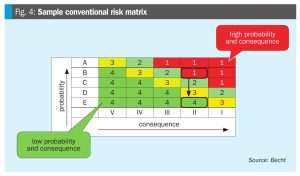
The Sulphur Institute at 65
The Sulphur Institute celebrates its 65th anniversary this year. In this article the organisation describes its lasting legacy and global impact.

The Sulphur Institute celebrates its 65th anniversary this year. In this article the organisation describes its lasting legacy and global impact.

Venkat Pattabathula reports on the American Institute of Chemical Engineers’ (AIChE) Safety in Ammonia Plants and Related Facilities Symposium, held from September 7–11th 2025, in Atlanta, Georgia, USA.

The following case study describes a serious incident and the consequences of erroneously mixing nitric acid with hydrochloric acid. In Part 1 we reported on the incident and the causes that led up to the event. In part 2 the impact, recommendations and lessons learned will be discussed.

At least 43 people were injured after sulphuric acid fumes leaked from a chemical storage at the port of Aqaba in October, according to local press reports. Two of the injured were admitted to intensive care and another six were held in hospital. The remaining cases were described as mild and were treated either on-site or in nearby hospitals. Jordan’s Public Security Directorate (PSD) said emergency teams from the Aqaba Civil Defence Department, supported by the Aqaba Support Group, responded immediately to reports of a sulphuric acid vapour leak which created a fume cloud roughly 400 square metres in size. The operating company’s technical team managed to stop the leak before specialised hazardous materials units from the Civil Defence took over, implementing safety procedures in line with approved protocols. Investigations are under way to determine the cause of the leak, in coordination with the Public Security Directorate and other relevant agencies. Three years ago a sulphuric acid leak from a storage tank at Aqaba killed 13 and injured several hundred people.

Venkat Pattabathula of SVP Chemical Plant Services, Taylor Archer of Clariant and Seshu Dharmavaram of Air Products, all AIChE Ammonia Safety Committee members, look back at some of the key lessons learned from the Symposium’s 70 year history.

The El Teniente mine, located in the O'Higgins region, suffered a collapse on 31 July. The collapse in the Andesita sector of the mine is understood to have been as a result of seismic activity that registered 4.2 on the Richter scale. It remains unknown whether the seismic activity was caused by the mining operations or natural activity, according to industry sources. Underground operations are to be halted for an unknown period of time while the open air sector, which represents around 10% of the total production, will remain open, according to industry participants.

An explosion at the FrieslandCampina site in Borculo in July 2025 this year was reportedly caused by an error in the discharge of hydrochloric acid. The explosion released a mix of chlorine gas and nitrogen oxides. A truck driver reported to the wrong unloading point at the dairy company in Gelderland on 4th. Both the driver and a factory employee failed to properly check the cargo’s paperwork, resulting in the hydrochloric acid being unloaded into a nitric acid tank. Furthermore, an incorrect coupling was used during the unloading process, the company reported after its own investigation. An orange cloud containing chlorine gas and nitrogen dioxide was released and spread throughout the surrounding area. Around 21:00, the site was evacuated and the fire department was alerted. At 22:13, the tank exploded. The tank lid was later found in a meadow near the factory.

The following case study describes a serious incident and the consequences of erroneously mixing nitric acid with hydrochloric acid. In Part 1 we report on the incident and the causes that led up to the event. In part 2 the impact, recommendations and lessons learned will be discussed.

Becht’s Risk Based Work Selection (RBWS) process is a structured, data-driven method that uses risk and benefit-to-cost analysis to optimise turnaround and maintenance work in industrial facilities, resulting in significant cost savings and improved reliability.

Russian and Ukrainian news outlets have reported that there has been a drone attack on the Nevinnomyssk Azot chemical plant in Russia’s Stavropol district. The attack took place on the night of June 14th. Ukraine’s Centre for Counteracting Disinformation said that the fertilizer plant “is a critical element of the Russian military-industrial complex. It produces […]